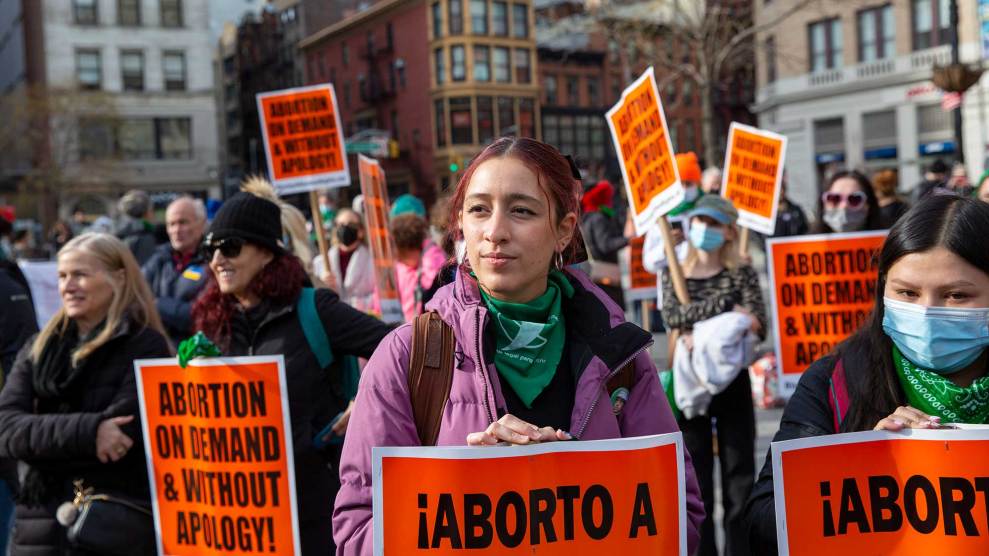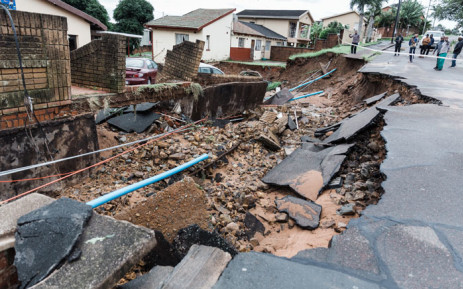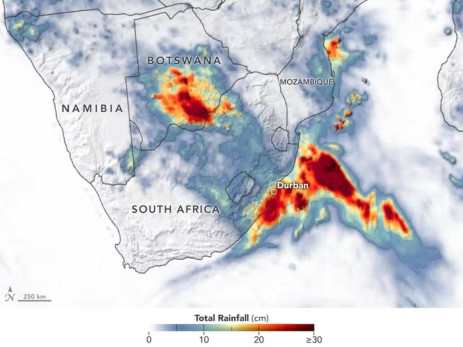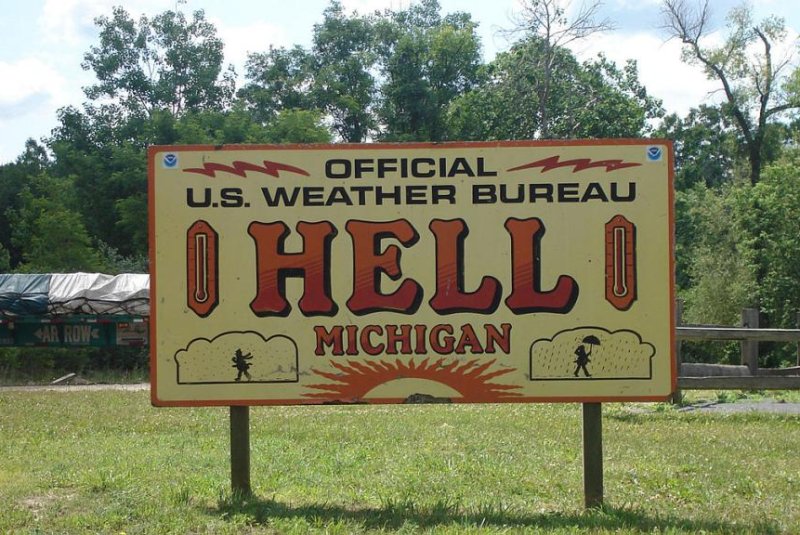More states are restricting the shackling of pregnant inmates, but it still occurs
April 22, 2022
JOE HERNANDEZ
NPR

A pregnant female inmate at the Western Massachusetts Regional Women's Correctional Center in Chicopee, Mass., poses for a portrait in the facility's visiting area in 2014.
Federal Legislation Seeks Ban On Shackling Of Pregnant Inmates
"The reason that we have to have a law, to me, is because our carceral system is fundamentally gendered to imagine the default prisoner as male," she said.
Even among the laws that do exist, there frequently are exceptions if officials believe a pregnant inmate may attempt to flee or harm others.
Tennessee is the latest state to move toward limiting restraints on pregnant inmates
According to Tennessee lawmakers, state officials already limit the practice of shackling pregnant inmates during labor at state-run facilities, but the proposal would enshrine that prohibition into state law and also apply it to county jails.
The state Senate approved the bill without opposition on Thursday. The House of Representatives passed it on Monday.
It now needs the signature of Republican Gov. Bill Lee to become law.
The measure restricts pregnant inmates from being put in restraints except under certain circumstances, such as if a corrections officer determines the inmate is a flight or security risk. Inmates can also be restrained "solely by handcuffs in the front of her body" during transport or outside their facility.

NATIONAL
Pregnant, Locked Up, And Alone
The law prohibits a pregnant inmate from being restrained around the ankles, legs or waist during labor and delivery. It also forbids restraining a pregnant inmate's hands behind their back or attaching them to another inmate.
"We want safe and healthy pregnancies for every mother and child," state Sen. Raumesh Akbari, the Democrat who sponsored the Tennessee bill, said in a statement.
"By restricting the dangerous and inhumane practice of shackling incarcerated women who give birth while in correctional custody, we are promoting better pregnancy outcomes," she added.
The Tennessee Sheriffs' Association took issue with an earlier version of the bill, arguing that pregnant inmates could still pose a threat to those around them, WPLN reported.

DISCIPLINE AND WOMEN IN PRISON
Federal Report Says Women In Prison Receive Harsher Punishments Than Men
"Just because an inmate's pregnant does not mean they're incapacitated, and we do not know what's in everyone's mind as to what their attempts or actions could be," the association's executive director, Jeff Bledsoe, testified at a recent committee hearing. "We have to prepare for the worst and hope for the best, and restraints help us to protect ourselves, to protect the inmate."
The bill was later amended to take into account those concerns as well as other feedback from the Tennessee Department of Correction, according to WPLN.

A pregnant female inmate at the Western Massachusetts Regional Women's Correctional Center in Chicopee, Mass., poses for a portrait in the facility's visiting area in 2014.
Dina Rudick/Boston Globe/Getty Images
The Tennessee legislature gave its final approval to a bill on Thursday that would restrict the use of shackles and other restraints on pregnant inmates — the latest state to limit what medical experts say is a routine but dangerous practice for pregnant people and fetuses.
More than a dozen states have no laws restricting the shackling of pregnant inmates, according to the American College of Obstetricians and Gynecologists, and those that do often make exceptions for public safety or other reasons.
It's unclear exactly how many pregnant inmates are shackled or restrained each year, but experts say it still occurs in U.S. prisons and jails, where an estimated 58,000 pregnant women pass through annually.
A 2018 study found that, among hospital nurses who said they cared for incarcerated women during pregnancy or the postpartum period, 82.9% reported that their incarcerated patients were shackled "sometimes to all of the time."
"It's a very demeaning and dangerous practice," Corene Kendrick, deputy director of the ACLU National Prison Project, told NPR.
"A lot of these policies that prison systems have about shackling people when they go to outside medical care are just absurd," Kendrick added.
Sponsor Message
The medical community opposes shackling pregnant inmates
Medical experts roundly criticize the practice of shackling pregnant inmates. National organizations — from the American College of Obstetricians and Gynecologists to the American Medical Association to the Association of Women's Health, Obstetric and Neonatal Nurses — oppose it, or support restrictions.
Dr. Carolyn Sufrin, an associate professor at the Johns Hopkins School of Medicine, says having an inmate shackled during labor and delivery presents challenges for doctors and nurses.

SHOTS - HEALTH NEWS
Pregnant Behind Bars: What We Do And Don't Know About Pregnancy And Incarceration
For example, if medical staff detect a deceleration in the fetal heart rate and are worried about fetal distress, they may want to have the pregnant inmate change positions. In other cases, if an inmate requires emergency C-section, they'll need to be quickly transferred to the operating room.
"All of those things are impeded if that person is shackled to the bed, and we don't have time to be negotiating with an officer to unlock the restraints so that we can provide emergency, time-sensitive medical care," Sufrin said.
Even before labor and delivery, pregnant inmates who are shackled face other hazards, such as blood clots. Sufrin said restrained inmates are also at a higher risk of falling and are unable to break their fall, which could result in bleeding or even stillbirth.
The practice is not universally banned across the U.S.
Despite the widespread opposition to shackling pregnant inmates, not all states prohibit it by law.
At least 37 states have laws limiting the shackling of pregnant inmates, after Alabama Gov. Kay Ivey signed a measure into law last week.

LAW
Difficult Births: Laboring And Delivering In Shackles
Some of those states go as far as banning shackling throughout pregnancy as well as during labor, delivery and the postpartum recovery period.
Federal law also restricts the practice. The First Step Act, signed into law by President Donald Trump in 2018, bars the use of restraints on pregnant people in the custody of the Federal Bureau of Prisons and the U.S. Marshals Service.
Sufrin said these kinds of laws are necessary now because prisons and jails were never contemplated to house and provide health care for pregnant people.
The Tennessee legislature gave its final approval to a bill on Thursday that would restrict the use of shackles and other restraints on pregnant inmates — the latest state to limit what medical experts say is a routine but dangerous practice for pregnant people and fetuses.
More than a dozen states have no laws restricting the shackling of pregnant inmates, according to the American College of Obstetricians and Gynecologists, and those that do often make exceptions for public safety or other reasons.
It's unclear exactly how many pregnant inmates are shackled or restrained each year, but experts say it still occurs in U.S. prisons and jails, where an estimated 58,000 pregnant women pass through annually.
A 2018 study found that, among hospital nurses who said they cared for incarcerated women during pregnancy or the postpartum period, 82.9% reported that their incarcerated patients were shackled "sometimes to all of the time."
"It's a very demeaning and dangerous practice," Corene Kendrick, deputy director of the ACLU National Prison Project, told NPR.
"A lot of these policies that prison systems have about shackling people when they go to outside medical care are just absurd," Kendrick added.
Sponsor Message
The medical community opposes shackling pregnant inmates
Medical experts roundly criticize the practice of shackling pregnant inmates. National organizations — from the American College of Obstetricians and Gynecologists to the American Medical Association to the Association of Women's Health, Obstetric and Neonatal Nurses — oppose it, or support restrictions.
Dr. Carolyn Sufrin, an associate professor at the Johns Hopkins School of Medicine, says having an inmate shackled during labor and delivery presents challenges for doctors and nurses.

SHOTS - HEALTH NEWS
Pregnant Behind Bars: What We Do And Don't Know About Pregnancy And Incarceration
For example, if medical staff detect a deceleration in the fetal heart rate and are worried about fetal distress, they may want to have the pregnant inmate change positions. In other cases, if an inmate requires emergency C-section, they'll need to be quickly transferred to the operating room.
"All of those things are impeded if that person is shackled to the bed, and we don't have time to be negotiating with an officer to unlock the restraints so that we can provide emergency, time-sensitive medical care," Sufrin said.
Even before labor and delivery, pregnant inmates who are shackled face other hazards, such as blood clots. Sufrin said restrained inmates are also at a higher risk of falling and are unable to break their fall, which could result in bleeding or even stillbirth.
The practice is not universally banned across the U.S.
Despite the widespread opposition to shackling pregnant inmates, not all states prohibit it by law.
At least 37 states have laws limiting the shackling of pregnant inmates, after Alabama Gov. Kay Ivey signed a measure into law last week.

LAW
Difficult Births: Laboring And Delivering In Shackles
Some of those states go as far as banning shackling throughout pregnancy as well as during labor, delivery and the postpartum recovery period.
Federal law also restricts the practice. The First Step Act, signed into law by President Donald Trump in 2018, bars the use of restraints on pregnant people in the custody of the Federal Bureau of Prisons and the U.S. Marshals Service.
Sufrin said these kinds of laws are necessary now because prisons and jails were never contemplated to house and provide health care for pregnant people.
Federal Legislation Seeks Ban On Shackling Of Pregnant Inmates
"The reason that we have to have a law, to me, is because our carceral system is fundamentally gendered to imagine the default prisoner as male," she said.
Even among the laws that do exist, there frequently are exceptions if officials believe a pregnant inmate may attempt to flee or harm others.
Tennessee is the latest state to move toward limiting restraints on pregnant inmates
According to Tennessee lawmakers, state officials already limit the practice of shackling pregnant inmates during labor at state-run facilities, but the proposal would enshrine that prohibition into state law and also apply it to county jails.
The state Senate approved the bill without opposition on Thursday. The House of Representatives passed it on Monday.
It now needs the signature of Republican Gov. Bill Lee to become law.
The measure restricts pregnant inmates from being put in restraints except under certain circumstances, such as if a corrections officer determines the inmate is a flight or security risk. Inmates can also be restrained "solely by handcuffs in the front of her body" during transport or outside their facility.

NATIONAL
Pregnant, Locked Up, And Alone
The law prohibits a pregnant inmate from being restrained around the ankles, legs or waist during labor and delivery. It also forbids restraining a pregnant inmate's hands behind their back or attaching them to another inmate.
"We want safe and healthy pregnancies for every mother and child," state Sen. Raumesh Akbari, the Democrat who sponsored the Tennessee bill, said in a statement.
"By restricting the dangerous and inhumane practice of shackling incarcerated women who give birth while in correctional custody, we are promoting better pregnancy outcomes," she added.
The Tennessee Sheriffs' Association took issue with an earlier version of the bill, arguing that pregnant inmates could still pose a threat to those around them, WPLN reported.

DISCIPLINE AND WOMEN IN PRISON
Federal Report Says Women In Prison Receive Harsher Punishments Than Men
"Just because an inmate's pregnant does not mean they're incapacitated, and we do not know what's in everyone's mind as to what their attempts or actions could be," the association's executive director, Jeff Bledsoe, testified at a recent committee hearing. "We have to prepare for the worst and hope for the best, and restraints help us to protect ourselves, to protect the inmate."
The bill was later amended to take into account those concerns as well as other feedback from the Tennessee Department of Correction, according to WPLN.
These Eight States Have Passed Laws Making It Nearly Impossible to Get an Abortion
Six states have passed laws this year that copy abortion bans in Mississippi and Texas.
ARIANNA COGHILL
Arizona
On March 30, Arizona Gov. Doug Ducey signed a bill that mirrors Mississippi’s, forbidding abortion after 15 weeks of pregnancy. The law also makes no exceptions for cases of rape or incest. “In Arizona, we know there is immeasurable value in every life—including preborn life,” Ducey said. “I believe it is each state’s responsibility to protect them.” The law will go into effect in late June.
(Apparently, “the immeasurable value in every life” doesn’t include trans children: Ducey also signed several pieces of anti-trans legislation this year, including a bill that bars gender confirmation surgery for minors and prevents trans girls from playing on girls’ sports teams.)
Florida
On April 14, Gov. Ron DeSantis signed the latest 15-week ban, one that has an exception only for medical emergencies—meaning victims of rape or incest would not be able to get an abortion. The law goes into effect on July 1.
Idaho
Two weeks before Idaho’s six-week abortion ban was supposed to take effect, the state’s Supreme Court temporarily blocked it. The law allows the father, siblings, grandparents, and other extended family members of a fetus to sue the providers of an abortion up to four years after the procedure. If successful, the family could receive $20,000. On April 20, the court allowed Idaho lawmakers to use their own private attorneys to defend their positions in the upcoming court case.
Kentucky
On April 14, Kentucky’s legislature managed to override a veto from the governor on a bill that bans abortions after 15 weeks. The only exception for abortion outside the 15-week timeframe is a medical emergency.
The ACLU and Planned Parenthood have filed lawsuits against the state, questioning the constitutionality of the law. Until the matter is sorted out in court, the state’s only two abortion providers have halted all procedures.
Mississippi
In 2018, Mississippi passed the 15-week abortion ban that started them all. The ban outlaws abortion in the state, with exceptions only for the mother’s life and fetal abnormalities. There are no exceptions for cases of rape or incest.
In December, the Supreme Court heard arguments about Mississippi’s law. The court is expected to hand down its decision in June.
Oklahoma
On April 12, Republican Gov. Kevin Stitt signed legislation that makes performing an abortion illegal in Oklahoma. There are no exceptions in cases of rape or incest. If found guilty of providing an abortion, a person could face 10 years in prison and a $100,000 fine. Upon signing the bill, Stitt declared Oklahoma “the most pro-life state in the country.” The bill will go into effect in August.
South Dakota
On March 23, Republican Gov. Kristi Noem signed a bill that restricts the use of abortion pills, forcing a pregnant person seeking medication abortions to wait three days after an initial screening before getting their first dose of the two-dose regimen. The person would then have to schedule a third visit before getting their second and final dose. The law also bans abortions via telemedicine. Currently, South Dakota’s law is wrapped up in a federal court case and won’t go into effect until an injunction is lifted.
Texas
Texas’ absolute monster of a law not only bans abortions after six weeks, but it also does not include any exceptions for victims of rape or incest. The bill also encourages people to sue anyone suspected to have helped someone get an abortion, with the promise of a $10,000 award. Gov. Greg Abbott signed this bill into law in May 2021, kickstarting an entire slew of copycat bills across eight states.
Six states have passed laws this year that copy abortion bans in Mississippi and Texas.
ARIANNA COGHILL
Fellow
MOTHER JONES
APRIL 22, 2022

Gina M. Randazzo/ZUMA
With Roe v. Wade at risk of being overturned by the Supreme Court, 2022 is shaping up to be a historically bad year for reproductive rights. And while anti-choice lawmakers have been working toward this for decades, they’ve only gotten bolder with their moves in the past few years.
If the court does away with Roe, 26 states will put in place bans or severe abortion restrictions, according to data from the Guttmacher Institute, a reproductive rights think tank. Meanwhile, emboldened by the passing of other abortion bans in previous years, Republicans politicians have passed abortion bans left and right this year, setting reproductive rights back nearly half a century: In the first four months of this year alone, lawmakers across 42 states introduced a grand total of 536 bills restricting access to abortions—86 of which effectively banned abortion outright.
So far, six states have successfully passed versions of these bans, and most of them look eerily familiar. It appears as those legislators are taking a page straight out of either Texas or Mississippi’s playbook: In 2021, Texas passed a law that prohibited abortions only after six weeks of pregnancy, while three years prior, Mississippi passed a law preventing abortions after 15 weeks of pregnancy.
The aftermath of these laws has been devastating. People seeking abortions in Texas have been forced to flee to other states—and sometimes other countries—to receive the procedure. Currently, there are eight states that have either banned or are attempting to ban abortions a maximum of 15 weeks after a pregnancy. Here’s a look at where they stand:

Gina M. Randazzo/ZUMA
With Roe v. Wade at risk of being overturned by the Supreme Court, 2022 is shaping up to be a historically bad year for reproductive rights. And while anti-choice lawmakers have been working toward this for decades, they’ve only gotten bolder with their moves in the past few years.
If the court does away with Roe, 26 states will put in place bans or severe abortion restrictions, according to data from the Guttmacher Institute, a reproductive rights think tank. Meanwhile, emboldened by the passing of other abortion bans in previous years, Republicans politicians have passed abortion bans left and right this year, setting reproductive rights back nearly half a century: In the first four months of this year alone, lawmakers across 42 states introduced a grand total of 536 bills restricting access to abortions—86 of which effectively banned abortion outright.
So far, six states have successfully passed versions of these bans, and most of them look eerily familiar. It appears as those legislators are taking a page straight out of either Texas or Mississippi’s playbook: In 2021, Texas passed a law that prohibited abortions only after six weeks of pregnancy, while three years prior, Mississippi passed a law preventing abortions after 15 weeks of pregnancy.
The aftermath of these laws has been devastating. People seeking abortions in Texas have been forced to flee to other states—and sometimes other countries—to receive the procedure. Currently, there are eight states that have either banned or are attempting to ban abortions a maximum of 15 weeks after a pregnancy. Here’s a look at where they stand:
Arizona
On March 30, Arizona Gov. Doug Ducey signed a bill that mirrors Mississippi’s, forbidding abortion after 15 weeks of pregnancy. The law also makes no exceptions for cases of rape or incest. “In Arizona, we know there is immeasurable value in every life—including preborn life,” Ducey said. “I believe it is each state’s responsibility to protect them.” The law will go into effect in late June.
(Apparently, “the immeasurable value in every life” doesn’t include trans children: Ducey also signed several pieces of anti-trans legislation this year, including a bill that bars gender confirmation surgery for minors and prevents trans girls from playing on girls’ sports teams.)
Florida
On April 14, Gov. Ron DeSantis signed the latest 15-week ban, one that has an exception only for medical emergencies—meaning victims of rape or incest would not be able to get an abortion. The law goes into effect on July 1.
Idaho
Two weeks before Idaho’s six-week abortion ban was supposed to take effect, the state’s Supreme Court temporarily blocked it. The law allows the father, siblings, grandparents, and other extended family members of a fetus to sue the providers of an abortion up to four years after the procedure. If successful, the family could receive $20,000. On April 20, the court allowed Idaho lawmakers to use their own private attorneys to defend their positions in the upcoming court case.
Kentucky
On April 14, Kentucky’s legislature managed to override a veto from the governor on a bill that bans abortions after 15 weeks. The only exception for abortion outside the 15-week timeframe is a medical emergency.
The ACLU and Planned Parenthood have filed lawsuits against the state, questioning the constitutionality of the law. Until the matter is sorted out in court, the state’s only two abortion providers have halted all procedures.
Mississippi
In 2018, Mississippi passed the 15-week abortion ban that started them all. The ban outlaws abortion in the state, with exceptions only for the mother’s life and fetal abnormalities. There are no exceptions for cases of rape or incest.
In December, the Supreme Court heard arguments about Mississippi’s law. The court is expected to hand down its decision in June.
Oklahoma
On April 12, Republican Gov. Kevin Stitt signed legislation that makes performing an abortion illegal in Oklahoma. There are no exceptions in cases of rape or incest. If found guilty of providing an abortion, a person could face 10 years in prison and a $100,000 fine. Upon signing the bill, Stitt declared Oklahoma “the most pro-life state in the country.” The bill will go into effect in August.
South Dakota
On March 23, Republican Gov. Kristi Noem signed a bill that restricts the use of abortion pills, forcing a pregnant person seeking medication abortions to wait three days after an initial screening before getting their first dose of the two-dose regimen. The person would then have to schedule a third visit before getting their second and final dose. The law also bans abortions via telemedicine. Currently, South Dakota’s law is wrapped up in a federal court case and won’t go into effect until an injunction is lifted.
Texas
Texas’ absolute monster of a law not only bans abortions after six weeks, but it also does not include any exceptions for victims of rape or incest. The bill also encourages people to sue anyone suspected to have helped someone get an abortion, with the promise of a $10,000 award. Gov. Greg Abbott signed this bill into law in May 2021, kickstarting an entire slew of copycat bills across eight states.

















